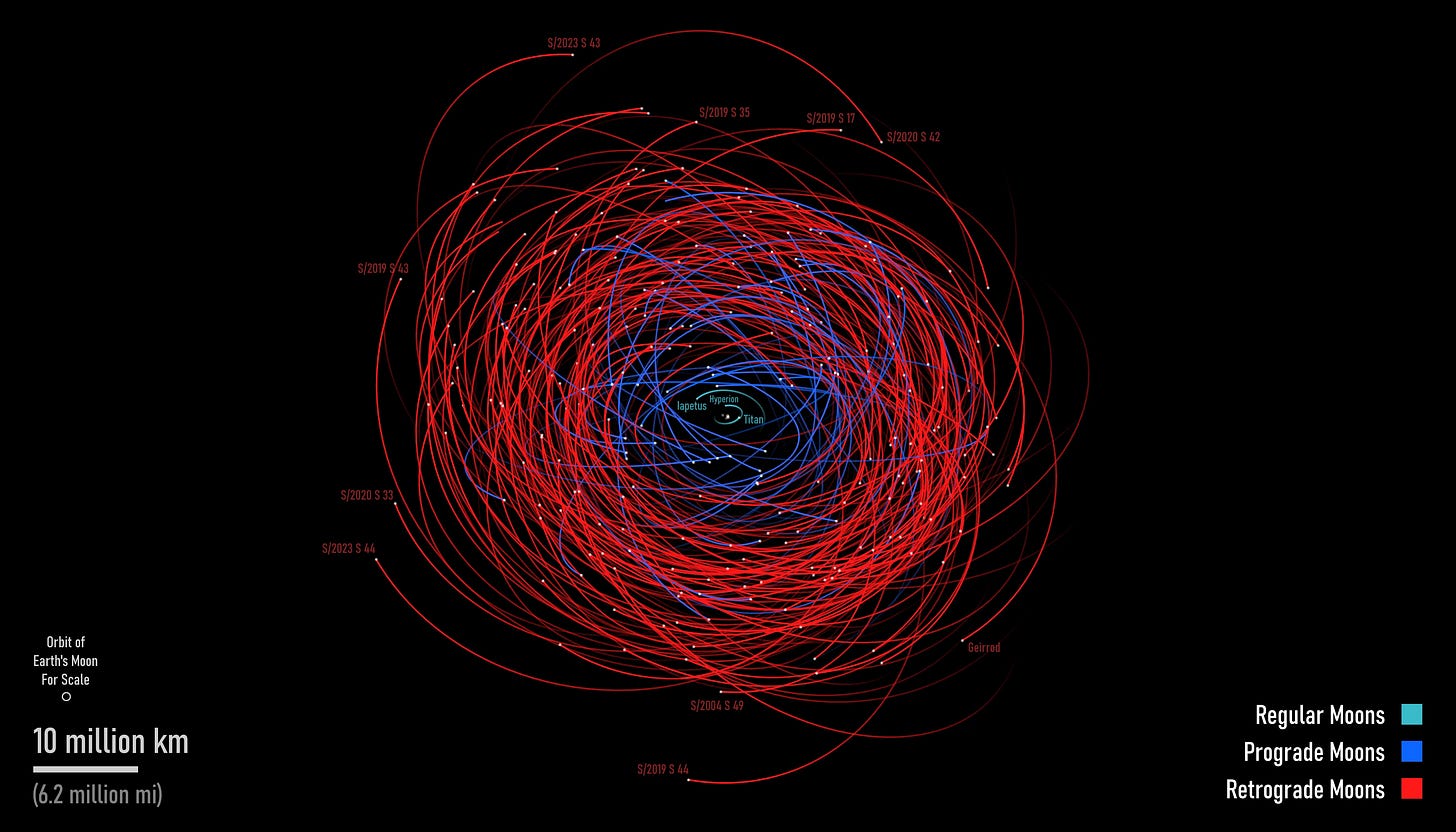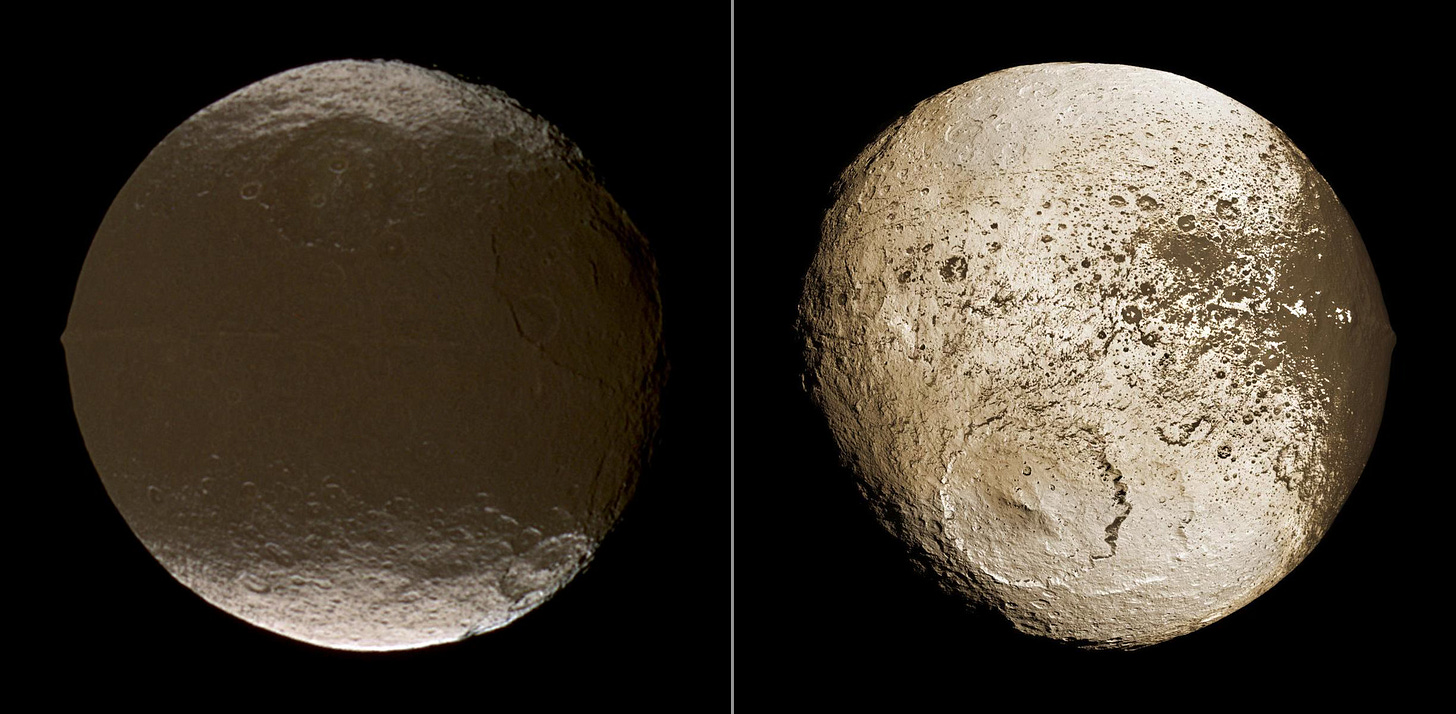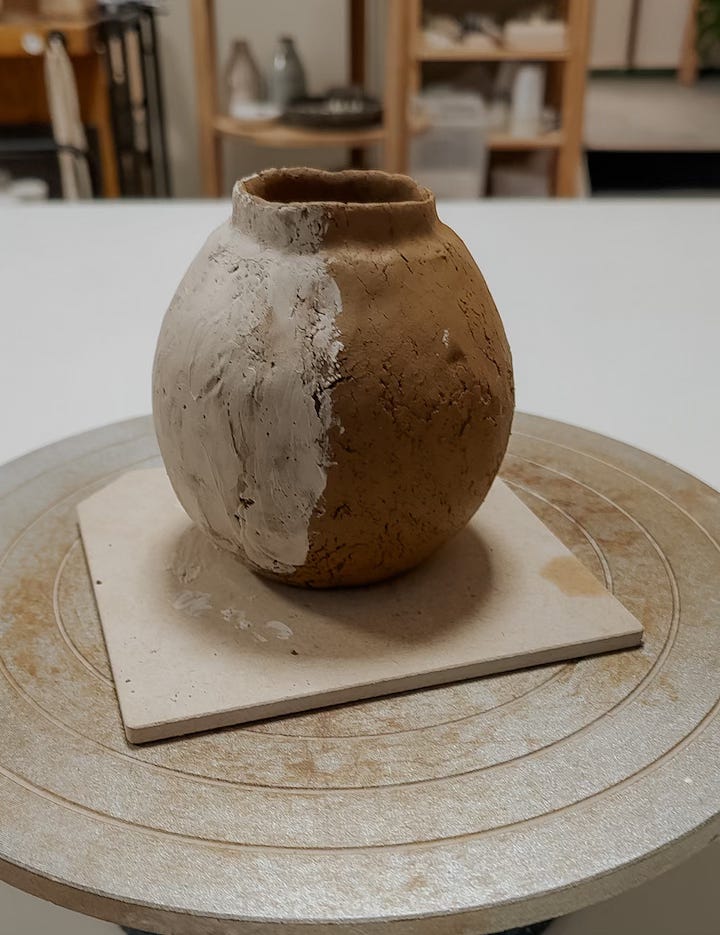This post is a rare deviation from my usual historical/analytical content, to bring you an announcement about a new personal project of mine. After this announcement, updates on this project will probably appear at the end of each of my regular posts, as I am currently feeling very unsure about mixing personal work with the content that probably brought you here in the first place. I will be back next week with an article about more poetry and pottery.
In March of this year, astronomers discovered 128 new moons orbiting Saturn. These were not necessarily all new observations: some of these bodies had been captured earlier but could now be better understood thanks to new discovery techniques and more telescopes. The discovery brings the total amount of moons known to orbit Saturn to 274, the largest number in our solar system. If you are somewhat familiar with my work, you know that I love combining planetary science with ceramics.
This discovery sparked the idea to create a vase for each of the 274 moons, while documenting the process of making each one as a diary format on my blog. The expression in clay of the current number of moons orbiting a distant planet is both an exercise in repetition and observation. A way to stay grounded through acts of creation, seeing the completion of a vase as a metaphorical orbit. What will our world look like once the vases are finished? This is my attempt to create in uncertain times.
Each vase will be hand-built with stoneware or porcelain. Once a vase is finished, it will be made available on my website. Before leaving the studio, it will be photographed on film. I intend to set up an exhibition at the end of the project, showing a mix of photos and the remaining vases.
The first moon, Enceladus, had already been created and sold before this project even started, so she's included on the page.
The first diary entry recounts the making of my first vase under this project: Iapetus.
Iapetus is Saturn's third largest moon (1436km in diameter) and has an orbit period around Saturn of 79 days. It was discovered by Giovanni Cassini on Oct. 25, 1671. When the Cassini probe flew by Iapetus in 2007, it sent back incredible images of the planet. One hemisphere is white (probably covered in ice), and one is significantly darker (featuring craters).
I made Iapetus by hand on March 14th 2025. You can read the diary entry on my blog and I also reproduced it below in its entirely.
I do not keep a paper diary. I do have several notebooks with notes, drawings, sketches, ideas, glaze recipes and poems. But I do not write every day. I know all the great writers do - and I do not consider myself one. If I ever started writing a diary documenting my work, it would have to be now, in these times. The mundane and the extraordinary are intertwined.
14th March 2025
I worked on Iapetus at our studio over the course of 3 hours, while we were open to the public and people came and went, bringing in their work for firing or picking up their finished ceramics. I struggled to finally sit down to make this vase, as I struggled to not be interrupted while making a few glaze tests a few hours earlier. Wedging, pinching. Will the glaze really look metallic? It felt like a Saturday at the studio. We were busy. I had great conversations with Pam. Should I have tested another recipe? I built the vase from two pinched pots. The shaping of it was the most time consuming, but I thoroughly enjoyed it. At then end, I applied some porcelain slip on one side of the vase. I should have eaten a snack.
Where you can find me or my work this month
I am the co-founder of a community ceramics studio in Berlin (Germany): Kleistone Studio. We offer classes, firing services and events. Visit us at: www.kleistonestudio.com
My collection inspired by lunar landscapes, Moonscape, is available on my website and a few pieces have been added recently.






